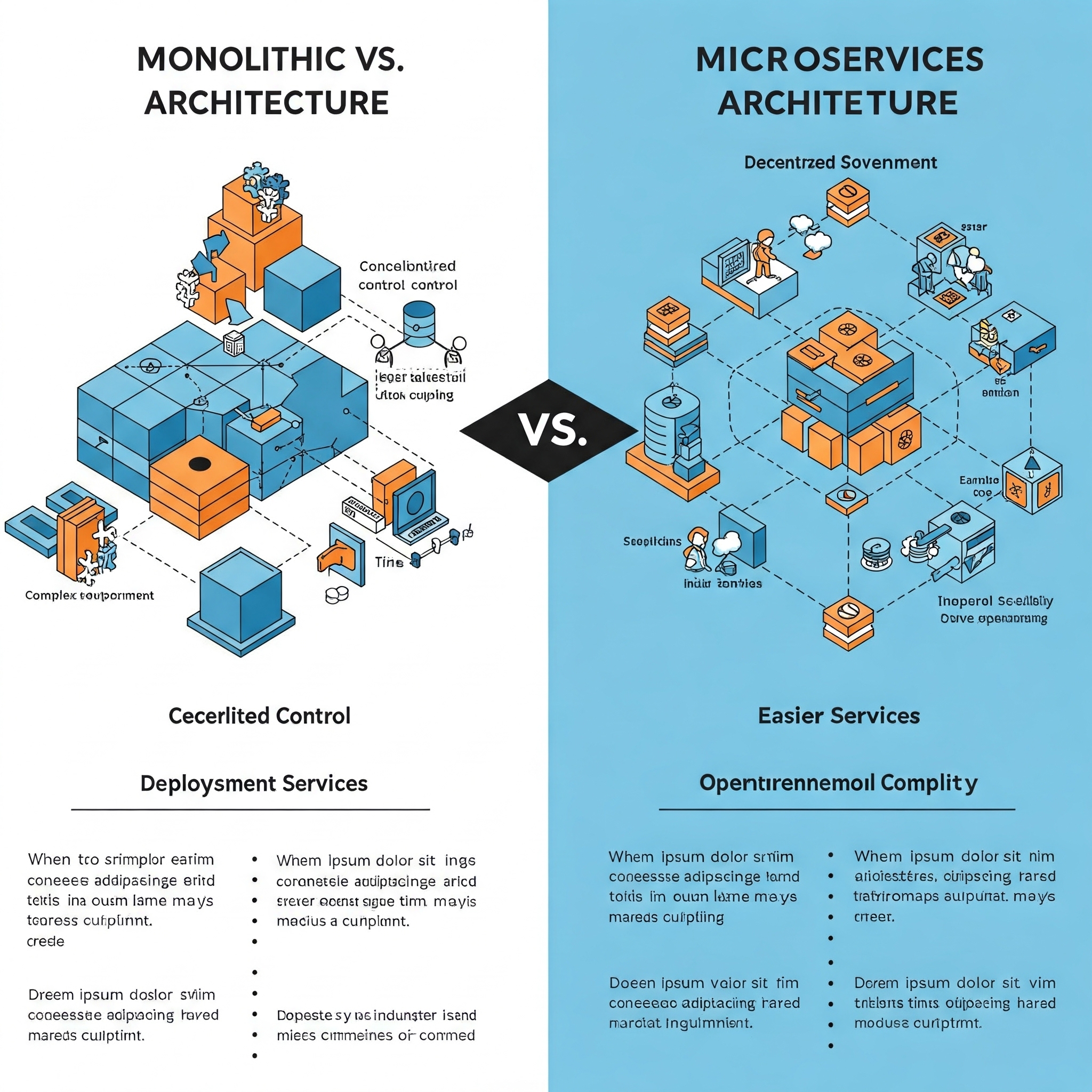Monolithic vs. Microservices Architecture
What is a Monolithic Architecture?
A monolith is a traditional approach where the entire application runs as a single, cohesive system. All components of the application – from the user interface to the data access layer – are tightly coupled and operate within a single process.
Key features:
- Single codebase
- Shared database
- All application functionalities in one process
- Single deployment of the entire system
What is a Microservices Architecture?
Microservices break down an application into a collection of small, independent services that communicate with each other via APIs. Each microservice is responsible for a specific business functionality and can be developed, deployedand scaled independently.
Key features:
- Multiple independent services
- Separate databases for each service
- Communication via APIs (REST, gRPC, messaging, etc.)
- Independent deployments for each service
Impact on Deployment
Monolith
- Initial ease: Deploying a monolith is initially simple – you run one processand you're done.
- Growing complexity: Over time, deployments become riskier – one change can affect the entire system.
- Longer build times: As the application grows, the build and testing process lengthens.
Microservices
- Complexity from the start: Requires infrastructure setup for multiple services from the beginning.
- Continuous delivery: Easier to introduce changes in individual parts of the system without risking the whole.
- Team independence: Different teams can deploy their services without blocking each other.
- Infrastructure requirements: You need tools for container orchestration, monitoring, CI/CD.
Impact on Scalability
Monolith
- Scaling the whole: You have to scale the entire system, even if only one function requires additional resources.
- Simple horizontal scaling: Easy to add more instances of the same code behind a load balancer.
- Technological limitations: The entire system must be written in the same technology.
Microservices
- Precise scaling: You can scale only the services that need it, saving resources.
- Technology diversity: Each service can be written in a different programming language or framework.
- Flexibility: Easier to adapt to changing business requirements.
Impact on System Complexity
Monolith
- Simple initial architecture: Easier to understand the system when everything is in one place.
- Growing chaos: Over time, without a rigorous approach, a monolith can turn into a "big ball of mud."
- Easier debugging: Tracing the flow of requests is simpler within a single process.
Microservices
- Distributed complexity: The system is harder to understand as a whole.
- Debugging challenges: Tracking requests across multiple services requires advanced tools.
- Network issues: Latencies in communication between services can affect the performance of the entire system.
- Handling partial failures: You need to anticipate and handle situations where some services are unavailable.
E-commerce System Example
Imagine an e-commerce system with features like a product catalog, shopping cart, paymentsand order management.
Monolithic Approach: All functions run within a single application. When Black Friday causes a sudden surge in traffic, the entire system must be scaled, even though the shopping cart and payment functionalities are mainly overloaded. Introducing a new payment method requires deploying the entire system, increasing risk.
Microservices Approach: Each function runs as a separate service. During Black Friday, only the services handling the shopping cart and payments can be scaled. A new payment method can be deployed without touching the rest of the system.
However, new challenges arise in microservices:
- The "place order" operation requires coordination between multiple services.
- When the payment service is slow, it's harder to diagnose whether the problem lies within it or in the services communicating with it.
- With each new service, the complexity of the entire infrastructure grows.
When to Choose a Monolith?
- When you are starting a new project and are unsure about the requirements.
- When development speed is criticaland the team is small.
- When you don't have experience with distributed systems.
- When the project scale is not very large.
When to Choose Microservices?
- When you expect significant growth and scale.
- When you have a sufficiently large team that can be divided.
- When different parts of the system have different performance requirements.
- When you need independent deployment of individual components.
Summary
The choice between a monolith and microservices is not black and white. Many companies start with a well-designed monolith and only decide to migrate to microservices when specific scaling or development speed issues arise.
Remember that microservices are not an end in themselves but a solution to specific problems. If you don't have these problems, a monolith might be a simpler and more effective solution.
The most important thing is to understand the trade-offs associated with each approach and choose the one that best suits your business needs, team capabilitiesand development plans.
